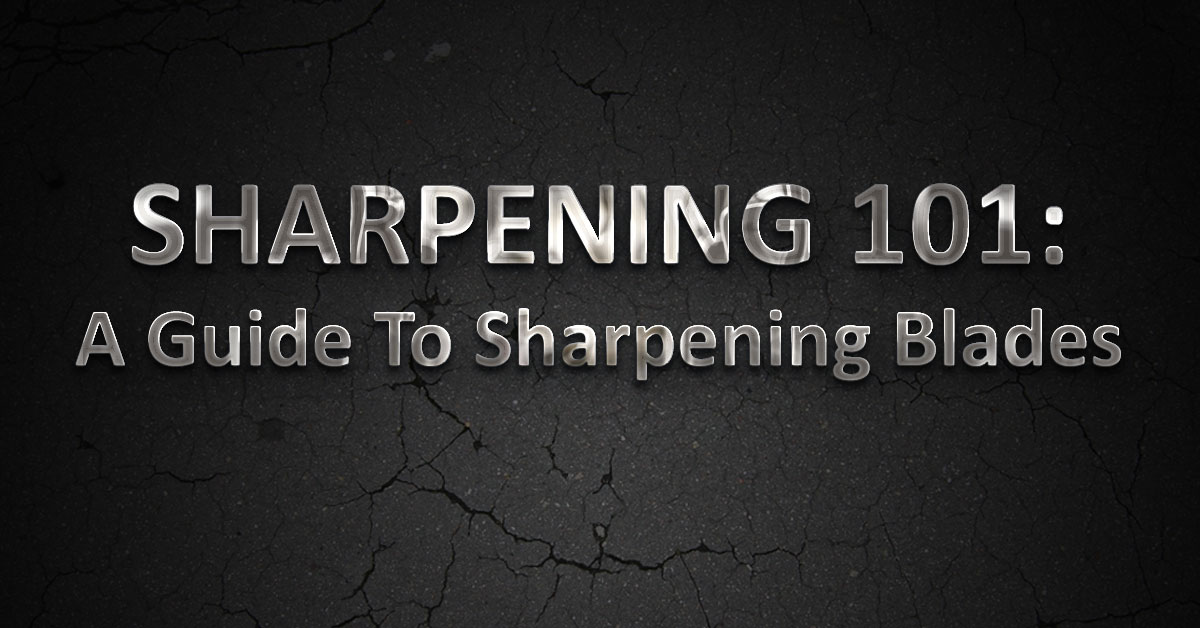Advice, Buying Guides
Sharpening 101: A Guide To Sharpening Blades
It is more dangerous to use a blunt knife than a sharp one because a blunt knife causes you to use more force and an improper technique to get the same cut.
This is when slippage happens, and accidents occur.
So many people are unaware of just how dangerous a blunt knife can be. If you don’t take care of your blade and let it go blunt, the next time you use it you have to work extra hard, putting on more pressure than you need to.
If you want to handle knives safely, then making sure it is sharp and ready to use is one of the best steps you can take.
Sharpening Methods
There is a myriad of sharpening systems available. They generally fall into the following categories:
Each of the methods has its pros and cons. It’s best to find the best method that works for you and learn the correct techniques so that you are able to maintain your knives correctly.
Sharpening Grits
If you’ve ever thought about purchasing a whetstone or other sharpening system you will have no doubt encountered different types of ‘grit’, each with a corresponding number.
But what is grit in relation to sharpening and why are there so many different types?
Sharpening or whetstone grit is the number that defines how coarse the grit is. It is based on the size of the particles bound together on the stone. The lower the number, the larger the particles and the more coarse the grit will be.
Conversely, the higher the number the smaller the particles will be and the stone will be smoother.
- Low grit whetstone is in the range of 100-500 grit is for repairing damaged or very dull blades.
- Medium grit whetstone is in the range of 500-2000 and is good for sharpening the majority of knives.
- High grit whetstone is in the range of 2000-4000 and is useful taking an already very sharp knife up to the next level.
- Super high grit whetstone is in the range of 4000-30000 is for bring the blade edge up to it’s sharpest possible finish with a polished, mirror finish edge.
To be honest, for most people a coarse, medium and fine whetstone would be more than adequate. It get’s to a certain level of fine grit where the difference would be more cosmetic than anything else.
Know What You Want
Before you start to sharpen your blade you need to ask yourself the question – what is the objective?
Are you wanting a tough usable edge on a machete or are you after a super fine cutting edge on a knife?
Understanding what the desired outcome is will help you determine the best method and tools for sharpening.
Then ask yourself how much time and effort you want to put into sharpening?
If you don’t have the time nor the inclination to spend a lot of time with multi stage sharpening and honing, a tool designed to quickly get a usable edge would be sufficient.
If you want a super refined edge and are wiling to put in the time and effort required, a more complex and lengthy system can be employed.
Now you have decided on the objective and know how much time and effort you are willing to put in, it’s time to decide on the best method for you.
If you want a usable edge, but don’t want to spend a lot of time, a Pull Through Sharpener might be the best thing for you. Find out more about Pull Through Sharpeners here.
If you want the finest edge you can and have the time, using a whetstone or a sharpening system may well just suit your needs.
Find out more about whetstones here, and find out more about some of the sharpening systems available here.
If your edge is well maintained anyway, and you simply need to hone it, then a sharpening steel/rod would suffice. Find out more about sharpening rods/steels here.
Keeping your blade well maintained should be a matter of course. Learning a few techniques and selecting the right tool for the job will keep your blade usage as safe as possible.

